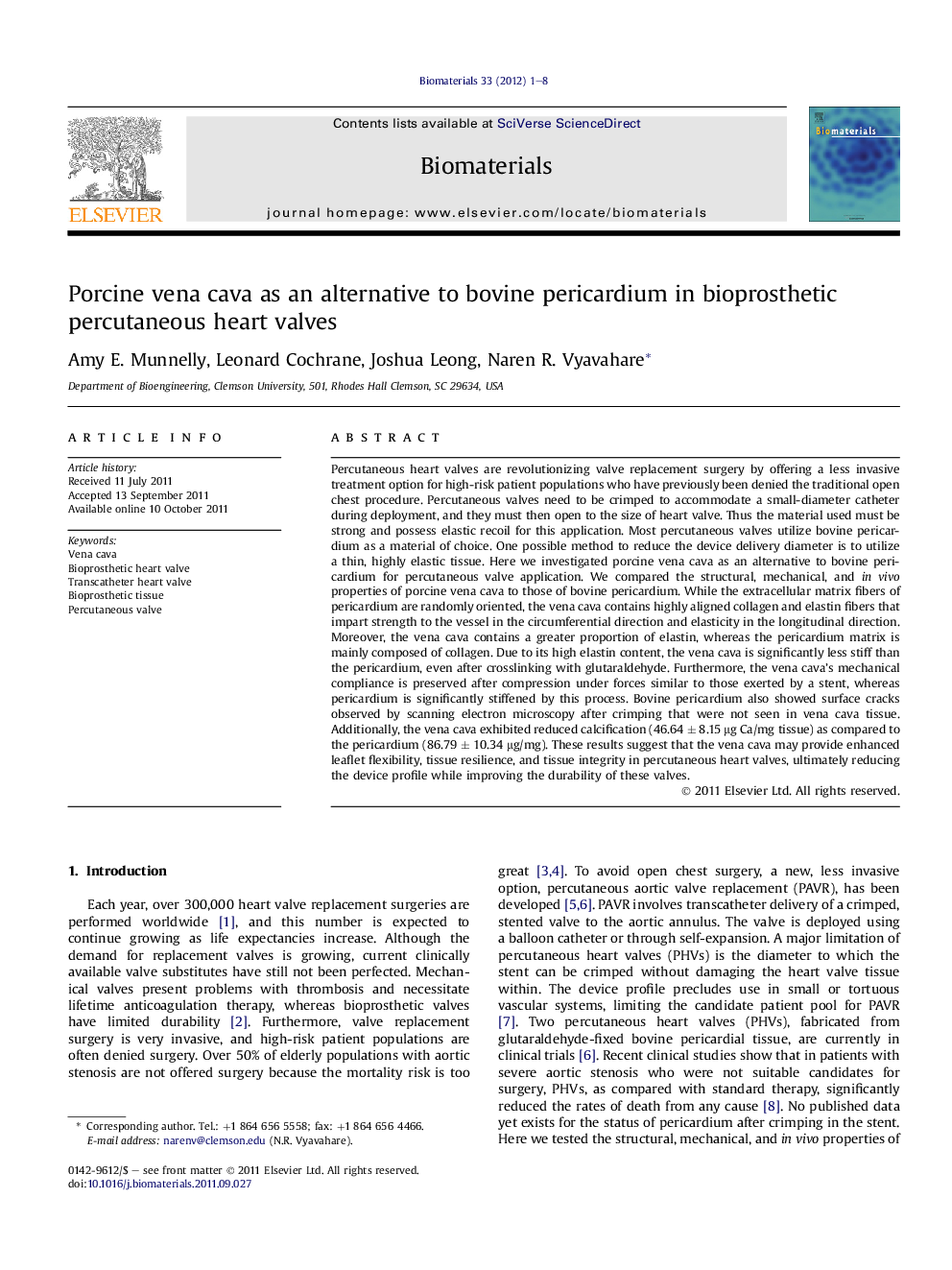| کد مقاله | کد نشریه | سال انتشار | مقاله انگلیسی | نسخه تمام متن |
|---|---|---|---|---|
| 7748 | 563 | 2012 | 8 صفحه PDF | دانلود رایگان |

Percutaneous heart valves are revolutionizing valve replacement surgery by offering a less invasive treatment option for high-risk patient populations who have previously been denied the traditional open chest procedure. Percutaneous valves need to be crimped to accommodate a small-diameter catheter during deployment, and they must then open to the size of heart valve. Thus the material used must be strong and possess elastic recoil for this application. Most percutaneous valves utilize bovine pericardium as a material of choice. One possible method to reduce the device delivery diameter is to utilize a thin, highly elastic tissue. Here we investigated porcine vena cava as an alternative to bovine pericardium for percutaneous valve application. We compared the structural, mechanical, and in vivo properties of porcine vena cava to those of bovine pericardium. While the extracellular matrix fibers of pericardium are randomly oriented, the vena cava contains highly aligned collagen and elastin fibers that impart strength to the vessel in the circumferential direction and elasticity in the longitudinal direction. Moreover, the vena cava contains a greater proportion of elastin, whereas the pericardium matrix is mainly composed of collagen. Due to its high elastin content, the vena cava is significantly less stiff than the pericardium, even after crosslinking with glutaraldehyde. Furthermore, the vena cava’s mechanical compliance is preserved after compression under forces similar to those exerted by a stent, whereas pericardium is significantly stiffened by this process. Bovine pericardium also showed surface cracks observed by scanning electron microscopy after crimping that were not seen in vena cava tissue. Additionally, the vena cava exhibited reduced calcification (46.64 ± 8.15 μg Ca/mg tissue) as compared to the pericardium (86.79 ± 10.34 μg/mg). These results suggest that the vena cava may provide enhanced leaflet flexibility, tissue resilience, and tissue integrity in percutaneous heart valves, ultimately reducing the device profile while improving the durability of these valves.
Journal: Biomaterials - Volume 33, Issue 1, January 2012, Pages 1–8